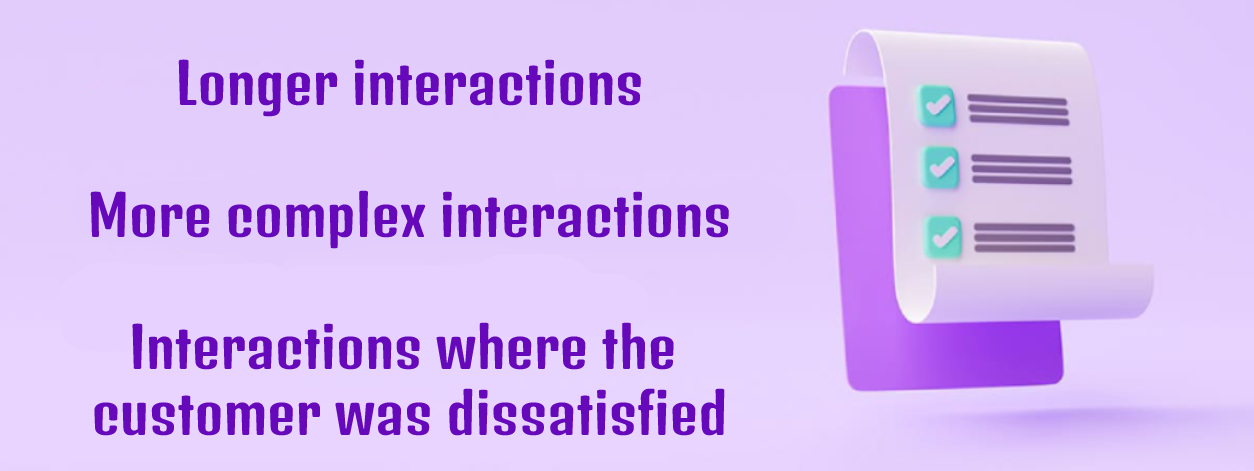Poor customer service costs businesses $75 billion every year. It is a smart, indeed an excellent proposition to develop a robust customer service strategy to prevent customer dissatisfaction.
While KPIs are vitally important, you still need a quality assurance program to guarantee your success. Customer service quality is closely connected to customer acquisition and retention, and therefore many companies are investing heavily in their customer experience management.
It may seem like quality is a difficult endeavor, but this article will help you adopt the best strategies and tools to make it an everyday procedure for your team/s.
What are customer service quality reviews?
Customer service quality reviews are a systematic method of providing feedback on customer interactions with your team. Reviewers assess support agent interactions against quality standards and generate a QA scorecard to provide feedback. Managers, specialists, or peers may conduct reviews across any support channel.
“Quality assurance for customer service (QA) is a process that ensures quality service to customers.”
Just like code should be reviewed before a programmer releases anything; an editor reviews a writer’s work; a support rep’s conversations should be quality checked.
Any company providing customer service across any platform—including email, live chat, and phone support—can benefit from customer service quality reviews. It can be accomplished either manually or with customer service QA software!
Why is integrating quality assurance reviews into your customer service strategy so important?
The purpose of conducting customer service quality conversation reviews is to make customers happier (and thus improve customer service quality).
Customers are willing to pay more for a better customer experience if your support team is more skilled at delivering satisfaction.
Data must be supported.

While many businesses track customer service metrics, those numbers alone don’t tell the entire tale. To be data-driven, you must comprehend where those numbers come from—what your employees are doing appropriately and where there is room for improvement.
Knowing the right metrics can help you gain a better understanding of why some interactions end better than others.
Both First Response Time (FRT) and Average Handle Time (AHT) provide teams with information about how long their customers must wait for assistance.
There are three key ways to measure how satisfied your customers are: Customer Satisfaction Score (CSAT), Net Promoter Score (NPS), and Customer Effort Score (CES).
But that’s not enough!
Many customer service teams use the above metrics to measure their customer service quality. However, how can you tell if you’re taking the right steps to improve these? Internal Quality Score can provide some assistance.
Internal Quality Score (IQS)
The purpose of this score is to gauge how effectively your organization delivers customer service, relative to your own quality standards. Determine where customer service representatives fall short of your company’s internal quality standards, and define what an ideal customer experience would look like from your perspective.
Make sure to use your IQS to comprehend why other metrics are not where you want them to be, and alter your support processes and coaching plans accordingly.
Why conduct customer service quality reviews? The answer is: it is the only way to find out your IQS.
- Make rating categories.
- Review every conversation against these categories
- Aggregate for IQS result
The quality of customer service can be improved by leveraging IQS. It’s useful to review QA to see how well your support team is performing, as that will help your agents improve professionally.
Who is responsible for reviewing customer service conversations?
There are four ways to deliver customer service quality assurance, “Structure your workflow through TransMon – Book a demo today!” :
- Manager reviews
- Peer reviews
- Self-reviews
- Specialist reviews
Some teams employ a mix of several (or all!) customer service strategies.
Let’s look at the advantages and disadvantages of each.
Managers reviews
Currently, manager or team lead reviews are the most widely used method of providing feedback. Since managers and team leads are responsible for the excellent quality of their support agents, assessing customer interactions is logical.
Small or medium-sized departments can benefit from this top-down approach, but we advise against it for teams with a lot of priorities or teams that are growing.
Peer Reviews

The quickest method of performing customer service reviews is through peer reviews. You can make quality a priority for the entire team by promoting shared learning.
Having a flat hierarchy is an excellent choice for teams seeking to promote a top-down approach. However, you must set review targets to prevent excessive micromanagement. Calibration sessions are also beneficial to ensure that everyone is on the same page.
Self Reviews

One of the best methods to encourage professional development is to conduct self-evaluations. By reviewing their performance, agents can better understand their communication patterns and alter how they communicate with clients.
Self-reviews alone are not as effective for quality improvement—this method is far more successful when agents discuss results with managers during regular 1:1s.
Specialists Reviews
It is very beneficial for large and growing businesses to employ quality assurance specialists in customer service. A QA specialist focuses on measuring and reporting quality as well as developing and introducing improvements.
A long-term strategy is needed to maintain consistently high customer service quality. For example, a dedicated specialist may handle the review workload, which would make it a much more meaningful endeavor—studying KPIs, designing training and onboarding programs, etc. Smaller teams with fewer human resources, however, find it difficult to make this choice.
Which one should you pick?
It’s up to you to determine which approach is best for gathering feedback at your organization: manager reviews with self-reviews, or QA specialist assessments combined with peer feedback. Regardless of the approach you choose, the goal is the same: to improve quality through feedback.
How many customer service requests should you handle?
It’s up to you to decide how many customer service reviews you want to conduct, based on several factors. The volume of total support tickets and the capacity of your reviewer/s are the deciding factors.
It is suggested that firms review between 2% and 10% of their total ticket volume, but some review less or more than that. TransMon offers automated, unbiased and stratified sampling options for your business requirement – Book a demo today
Don’t leave the decision of which amount is right for you up to fate. You can decide among several options:
- Set a percentage goal
A 10% volume is a good benchmark if you want an overall view of team performance. It gives you an idea of where most problems occur across all agents. - Set a ticket goal per support rep
Setting a target of reviewing a certain number of tickets per agent can help you refine your coaching. For example, 5 tickets per agent, per week. - Set a ticket goal per reviewer
Setting a target for the number of tickets, for example, 10 per week, ensures that your review program is continuous and that everyone shares the burden.
Tool Tip: With Transmon, you can save yourself a lot of work (or at least sweat). TransMon, India’s best Quality Monitoring tool, can help you audit 100% of interactions using AI and generate detailed reports on the click of a button.
It’s true that you can approach a higher percentage or number of tickets if you have a dedicated QA specialist or review team. However, quantity should not be your sole approach, as the next section illustrates.
Which tickets should you review regarding customer service?

Many organizations dedicate themselves to reviewing cases at random, which seems like a smart approach to collecting a representative sample of help desk activities. Random sampling, however, doesn’t provide diversity.
The most valuable customer service interactions are the outliers, not the average ones.
Focus on the conversations that are important.
The most significant discussions to review are:Watch a video of Multi-Dimensional Quality Scorecard for better process efficacy.
Which rating system should you apply to your critiques?
Scorecards with rating categories are used to measure support conversations, but you must decide how the ratings will be presented. Do you want a simple binary
Consider the following:
- Size and alignment of your review team
- Agent’s response to feedback
- Reporting outputs
To begin, a binary scale is excellent. Consistency in grading is more likely, and results are obvious at a glance.
However, agents should know that a negative rating is not always a bad thing; it simply signals the need for improvement. To circumvent this problem, many organizations adopt a three-point scale, giving some middle ground for the reviewer.
Your IQS score is created by summing up these scores into a final percentage.
What are the reasons for the importance of customer service feedback?

Great, you’ve established your quality assurance program!
It is not worthwhile to put in the effort if you don’t see the results. You can gain both quantitative and qualitative information about your teams through customer service reviews.
A company’s support level can also be improved through conversation reviews, but agent professional development is also dependent on them.
Customer service quality reviews can provide insight into how to improve interactions with customers and make them happier. Agents should actively push their managers for regular reviews because feedback is the fastest and most efficient way to grow professionally. These things are often quick and simple to address.
A strong customer service strategy makes professional development clear and systematic. The more feedback one is able to collect, the more boxes one gets to tick, and the further one will go.




